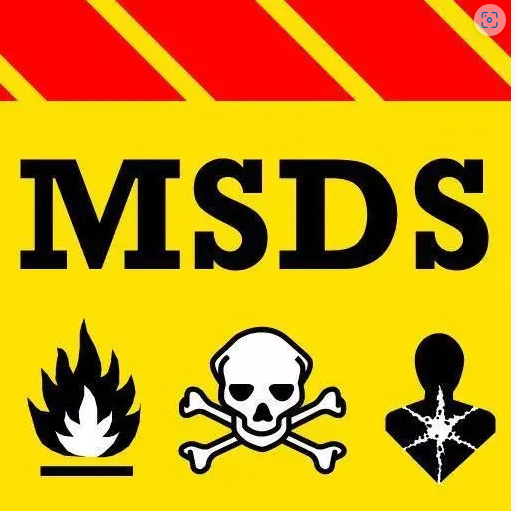I. Safety Data Sheet (SDS/MSDS)
According to GB/T 16483-2008, the Safety Data Sheet (SDS) is a carrier for chemical suppliers to convey basic chemical hazard information (including transportation, handling, storage and emergency action information) to downstream users.
At the same time, the Safety Data Sheet can also convey this information to public institutions, service agencies and other parties involved in the chemical.
In some countries, the Safety Data Sheet is also called the Material Safety Data Sheet (MSDS).

II. Contents of SDS/MSDS
SDS will provide information on chemicals in the following 16 parts. The title, number and order of each part should not be changed at will.
1. Chemicals and company identification
Mainly indicate the name of the chemical, the supplier’s product code, name, address, telephone number, emergency telephone number, fax and email address, and explain the recommended use and restricted use of the chemical.
2. Hazard Overview
Briefly summarize the most important hazards and effects of the chemical, mainly including: hazard category, invasion route, health hazard, environmental hazard, explosion hazard and other information.
3. Ingredient/composition information
Indicate whether the chemical is a substance or a mixture. For substances, its chemical name or trade name and common name should be given. For mixtures, the concentration or concentration range of hazardous components should be given. Whether it is a substance or a mixture, if it contains hazardous components, the Chemical Abstracts Index Registration Number (CAS Number) should be given.
4. First aid measures
Refers to the brief treatment methods for on-site self-rescue or mutual rescue required when the operator is accidentally injured, including: first aid measures for eye contact, skin contact, inhalation, and ingestion.
5. Firefighting measures
Mainly indicate the physical and chemical special hazards of chemicals, suitable fire extinguishing media, unsuitable fire extinguishing media and personal protection of firefighters, including: hazardous characteristics, fire extinguishing media and methods, fire extinguishing precautions, etc.
6. Leakage emergency treatment
Refers to the simple and effective emergency measures, precautions and elimination methods that can be adopted on site after chemical leakage, including: emergency actions, emergency personnel protection, environmental protection measures, elimination methods, etc.
7. Operation and storage
Mainly refers to information on chemical operation and safe storage, including: safety precautions, safe storage conditions and precautions in operation and disposal operations.
8. Contact control and personal protection
Protection methods and means taken to protect workers from chemical hazards during the production, operation, handling, transportation and use of chemicals. Including: maximum allowable concentration, engineering control, respiratory system protection, eye protection, body protection, hand protection, and other protection requirements.
9. Physical and chemical properties
Mainly describe the appearance and physical and chemical properties of chemicals, including: appearance and properties, pH value, boiling point, melting point, relative density (water = 1), relative vapor density (air = 1), saturated vapor pressure, heat of combustion, critical temperature, critical pressure, octanol/water partition coefficient, flash point, ignition temperature, explosion limit, solubility, main uses and other special physical and chemical properties.
10. Stability and reactivity
Mainly describe the stability and reactivity of chemicals, including: stability, prohibited incompatible substances, conditions to avoid contact, polymerization hazards, decomposition products.
11. Toxicological information
Provide toxicological information of chemicals, including: acute toxicity (LD50, LD50) of different contact methods, irritation, sensitization, subacute and chronic toxicity, mutagenicity, teratogenicity, carcinogenicity, etc.
12. Ecological information
Mainly states the environmental ecological effects, behaviors and fate of chemicals, including: biological effects (such as LD50, LD50), biodegradability, bioaccumulation, environmental migration and other harmful environmental effects.
13. Waste disposal
Refers to the safe treatment methods for packaging contaminated by chemicals and chemicals with no use value, including waste disposal methods and precautions.
14. Transportation information
Mainly refers to the requirements for domestic and international chemical packaging and transportation and the classification and numbering of transportation regulations, including: dangerous goods number, packaging category, packaging mark, packaging method, UN number and transportation precautions.
15. Regulatory information
Mainly legal provisions and standards for chemical management.
16. Other information
Mainly provides other information that is important for safety, including: references, filling time, filling department, data review unit, etc.
(Note: In order to facilitate SDS compilers to identify SDS of different chemicals, SDS should be set with SDS numbers.)
Post time: Dec-23-2024





